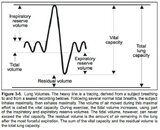simonbeans
Contributor
I totally appreciate your interest in "learn(ing) a bit about it". Most of what you are asking has been discussed for many years, and for some of us, explaining again is a bit tiresome. (Sorry). Especially when VDH has a very active forum and a great search engine. I am of the "old school": "Give a man a fish and you feed him for a day. Teach a man to fish and you feed him for a lifetime", which in this case is for you to do some research on the double hose regulator and in specific the items that you seem to be interested, i.e., DBE, HPR, Phoenix 1st stage, silicone diaphragms, etc. You might look in the download section of the VDH website (tab at top of home page) and read about the development of the Royal Aqua-Master.
I don't want to sound like (as Nemrod says) a "grouchy old coot", but for your first regulator, it is best to have a professional technician like Bryan refit your reg. That way you will have a great baseline of how a well tuned double hose should perform. (A long time ago there was a guy here in NY that was trying to set up his own USD AM. He said he couldn't get it to breathe well at all. Somewhere along the line he never learned that the tabs on the main diaphragm need to ride on the demand levers of the second stage).
I wish you well in your new adventure. There are great divers of double hose regulators available to help, just try to educate yourself with the information that has been learned through research and experience.
I don't want to sound like (as Nemrod says) a "grouchy old coot", but for your first regulator, it is best to have a professional technician like Bryan refit your reg. That way you will have a great baseline of how a well tuned double hose should perform. (A long time ago there was a guy here in NY that was trying to set up his own USD AM. He said he couldn't get it to breathe well at all. Somewhere along the line he never learned that the tabs on the main diaphragm need to ride on the demand levers of the second stage).
I wish you well in your new adventure. There are great divers of double hose regulators available to help, just try to educate yourself with the information that has been learned through research and experience.
Last edited:





